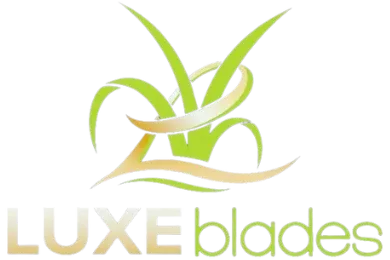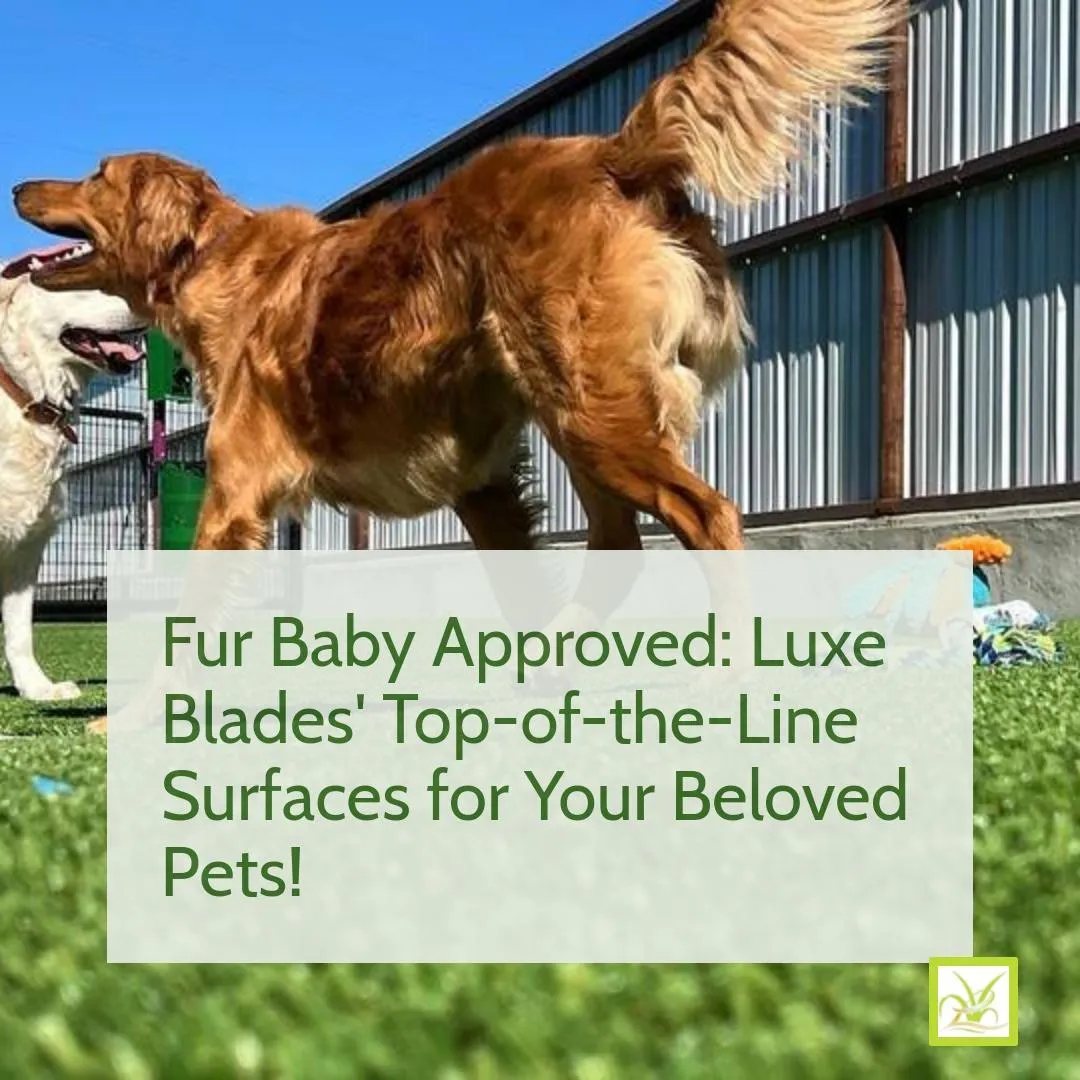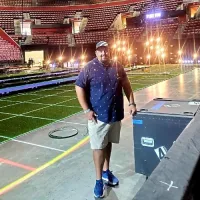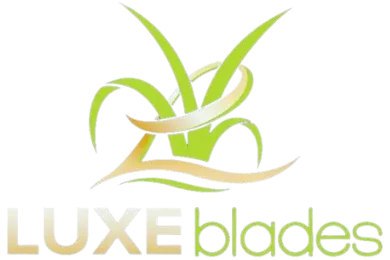972-764-8959
FREE ESTIMATES

blog
CONTACT
TURF TIMES

Top 12 Tips for Cleaning and Maintaining Artificial Grass for Pets
Finding the best ways to clean and maintain artificial grass for pets can be a daunting task. But with the right tips, you can keep your pet's play area clean and safe. In this guide, we’ll walk you through some easy and effective methods to ensure your artificial grass stays in top shape for your furry friends.

1. Understanding the Benefits of Artificial Grass for Pets
Artificial grass for pets offers numerous advantages that make it an exceptional choice for pet owners. One of the primary benefits is its enduring nature; unlike natural grass, synthetic turf can withstand heavy foot traffic without wearing out. This resilience ensures that your pets can run, jump, and play without causing unsightly bald spots or muddy patches. Additionally, artificial grass is easier to clean, which can be a godsend for busy pet owners. All it takes is a quick rinse or a light wash to keep it looking pristine.
Moreover, many artificial grass varieties are designed to be odor resistant. This means that even after your pets have played and done their business, the turf can be maintained without lingering smells. For those with allergies, artificial grass can also be a more suitable option, as it doesn’t harbor pollen or insects, creating a healthier play environment for both pets and humans.
2. Routine Cleaning Essentials
Establishing a routine cleaning schedule is crucial to maintaining the integrity and appearance of your artificial grass for pets. A simple weekly regimen can go a long way. Start by removing debris like leaves and sticks with a rake or a leaf blower. For pet owners, it’s essential to scoop up any waste immediately. The longer waste sits on the surface, the more likely it is to cause stains and unpleasant odors.
In addition to regular removal of debris and waste, rinsing the turf with water can help keep it fresh and clean. Using a hose with a spray nozzle allows you to effectively rinse away dirt and other residues. This step not only eliminates waste but also helps in maintaining the grass fibers’ aesthetics and resilience. Plus, regular cleaning will help cultivate a habit for both you and your pet.
3. Effective Removal of Pet Waste
Removing pet waste from artificial grass is different from traditional lawns. It’s important to use a pooper scooper or a small shovel to pick up solid waste, as this technique helps to avoid damaging the grass fibers. Once the feces are removed, be sure to rinse the area with water to eliminate residual odors and bacteria.
For urine, the cleaning method involves a little more nuance. While synthetic turf often has built-in drainage, you can assist in preventing smells by thoroughly rinsing the areas where your pets regularly relieve themselves. A mixture of water and pet-safe cleaners can be used if necessary—just make sure it's safe for artificial grass to avoid any damage. Following these steps regularly will ensure a healthy environment for your furry friends.
4. Using the Right Cleaning Tools
To keep your artificial grass looking its best, it's essential to have the right cleaning tools. A sturdy plastic rake is a must-have; it effectively lifts debris without damaging the grass fibers. Additionally, investing in a broom with stiff bristles can help sweep away smaller particles and leaves that may get stuck in the fibers.
A hose with an adjustable nozzle is also beneficial for rinsing off dirt and pet waste. For those harder-to-reach spots or keeping the edges clean, a handheld scrub brush can work wonders. These tools, combined with regular maintenance, will help you achieve that lush, green feel of your artificial grass while extending its lifespan significantly.
5. Dealing with Odors: Techniques and Solutions
Odors can be a persistent issue when it comes to artificial grass for pets, but several techniques can help alleviate this concern. After cleaning up waste, spraying the area with a vinegar-water solution can neutralize odors effectively. Vinegar works as a natural deodorizer and helps to break down any bacteria that may be present.
Additionally, consider using pet-safe enzymatic cleaners, specifically formulated to break down organic matter and tackle odors at their source. These cleaners are designed to be effective yet gentle, ensuring they are safe for both your pets and the turf material. Regularly applying these methods will keep your artificial grass looking and smelling fresh.
6. Preventing Bacteria and Germ Growth
Preventing bacteria and germ growth on your artificial grass is vital for the health of your pets. Regular cleaning is the first step, as it helps eliminate any accumulated waste and moisture that can foster bacterial growth. However, beyond just cleaning, using a mild disinfectant that is safe for artificial grass is advisable.
For deeper sanitization, you might want to consider using a power washer occasionally—just be sure to follow recommended settings to avoid damaging your grass. Additionally, maintaining proper drainage will also assist in keeping bacteria at bay, ensuring that rain or washing does not create stagnant water pools where germs can thrive.
7. Combatting Weeds in Artificial Grass
Even though artificial grass is designed to prevent weed growth, there are still instances where weeds might poke through. To combat this, regular inspections of your artificial turf are necessary. Early detection allows for quick removal of any invading weeds before they spread. Hand-pulling weeds can be effective but make sure to remove the root as well to discourage future growth.
If you find that weeds are a recurring problem, consider applying a pet-safe herbicide specifically formulated for artificial surfaces. Always be cautious and prioritize your pets’ safety by checking that any products used are non-toxic and approved for use around animals. Keeping your turf weed-free not only enhances its appearance but also promotes a healthier play area.
8. Regular Grooming: Keeping the Grass Tall
Regular grooming of your artificial grass for pets is key to maintaining its height and texture. Over time, the blades can flatten under pressure from foot traffic or heavier play. To remedy this, use a stiff broom or a specially designed turf rake to fluff up any flattened areas. This process not only maintains its aesthetics but also helps to keep the turf resilient.
In addition, regular grooming can assist in preventing the buildup of debris and organic materials that could lead to odors or bacteria. Aim to incorporate this into your weekly maintenance routine. The more you care for your artificial grass in this way, the longer it will serve as a viable play area for your pets.
9. Quick Fixes for Damage and Wear
Like all outdoor surfaces, artificial grass can sustain wear and tear over time, especially in high-use areas. Quick fixes to address minor damages can save you from costly replacements. For small tears or nicks, turf adhesive can be an effective option. Apply a little of the adhesive and press the damaged edges together. Allow it to dry completely to ensure a secure hold.
For larger damages, it may be necessary to replace individual patches. Fortunately, many artificial grass products come with extra pieces for such repairs. Simply cut out the damaged section and replace it with a patch of matching grass. This approach not only addresses the problem but also keeps your artificial play area looking pristine and inviting.
10. Seasonal Maintenance Tips
Seasonal changes bring different challenges for maintaining your artificial grass. During the fall, be on the lookout for leaves and debris that can accumulate and lead to mold if not promptly removed. Regularly raking or using a leaf blower will help keep your grass clear. In winter, snow should be removed carefully using a plastic shovel to avoid damaging the fibers.
As temperatures rise in the summer, consider rinsing your artificial grass more frequently. This not only helps with reducing heat but also keeps dirt and dust from becoming ingrained in the fibers. Each season requires a little attention, but with the right approach, maintaining your artificial grass can be a straightforward process.
11. Choosing Pet-Friendly Products for Cleaning
When it comes to cleaning artificial grass, choosing the right products is critical for the safety of your pets. Look for pet-safe and biodegradable cleaners that effectively tackle dirt without harmful chemicals. Many specialty brands offer environmentally friendly solutions specifically designed for synthetic surfaces.
In addition to cleaners, consider using natural deodorizing agents like baking soda to sprinkle on areas prone to odors. This simple method allows the baking soda to absorb smells before you rinse the area. Opting for pet-friendly products not only keeps your furry friends safe but also provides peace of mind for pet owners.
12. Getting Professional Help When Needed
Sometimes, despite our best efforts, we may find ourselves needing professional help to maintain our artificial grass for pets. Whether it’s extensive damage, odors that won’t go away, or just an overwhelming amount of cleaning, professionals can provide specialized services that address these issues effectively.
Hiring experts means you’ll benefit from their knowledge of the best cleaning products and techniques tailored for artificial grass. They can offer deep cleaning, repairs, and maintenance services that can extend the lifespan of your turf significantly. The investment in professional help is often worthwhile for ensuring that your synthetic grass remains a safe and attractive area for pets.

